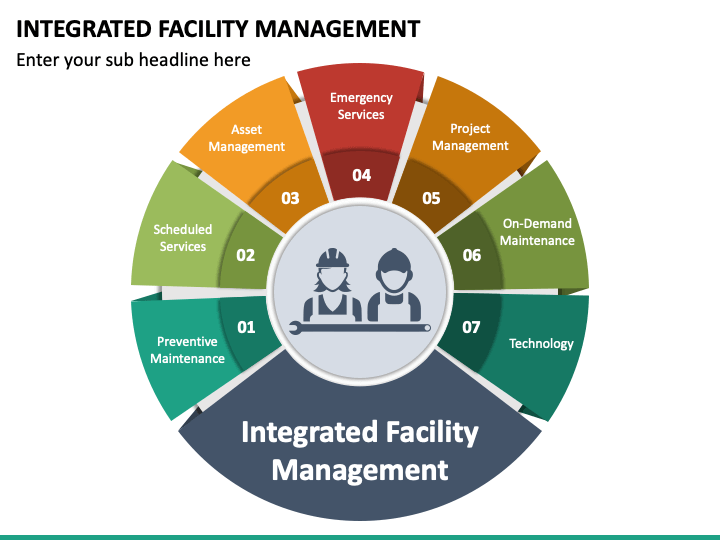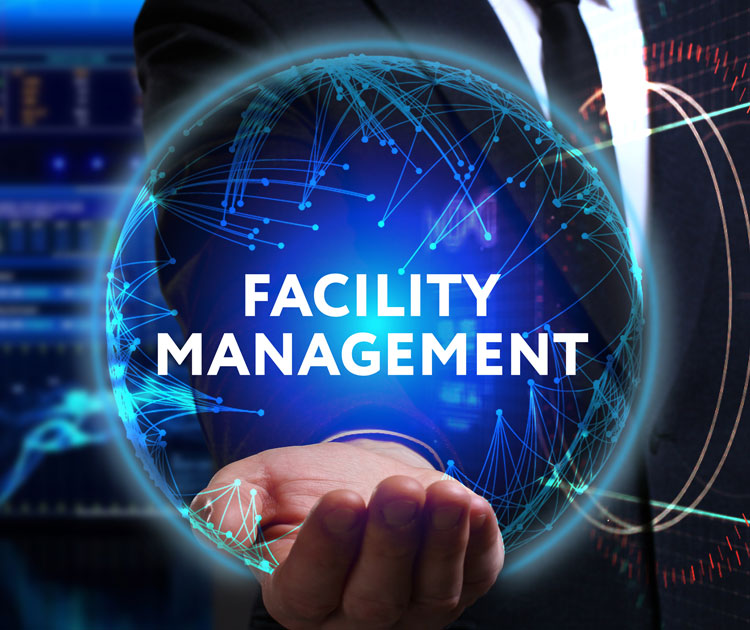Just How Effective Facility Management Can Change Your Workplace Setting
Just How Effective Facility Management Can Change Your Workplace Setting
Blog Article
The Vital Guide to Facility Monitoring: Approaches for Success
Facility administration plays a vital function in the overall success of an organization, offering as the backbone that sustains safety and security, performance, and effectiveness. The nuances of efficient center monitoring expand beyond plain logistics and call for a thorough understanding of both qualitative and measurable metrics.
Recognizing Facility Monitoring
What makes up reliable center administration? Effective center administration encompasses the control of various business functions to ensure that built settings are risk-free, efficient, and for productivity. Facility Management. It integrates the concepts of company, style, and design administration to develop a seamless functional flow within a company
Trick aspects of center monitoring consist of area planning, maintenance administration, and conformity with health and safety regulations. Space planning concentrates on maximizing making use of physical sources to support business objectives, while upkeep monitoring makes certain that centers are kept in ideal problem, maximizing life-span and lowering functional prices. Compliance with legal and regulative requirements is vital, as it safeguards the organization versus possible liabilities and improves its reputation.
In addition, efficient facility management depends on the calculated use of innovation, such as Structure Administration Systems (BMS) and Computer-Aided Facility Administration (CAFM) devices. These innovations assist in real-time monitoring of building systems and enhance maintenance procedures. Ultimately, a thorough method to facility monitoring not only promotes functional efficiency but likewise cultivates a positive atmosphere for staff members and site visitors alike, driving total organizational success.
Key Methods for Optimization
Optimizing facility administration requires a strategic strategy that straightens operational experiment organizational purposes. To accomplish this, the first key method is the implementation of integrated technological services. Utilizing advanced software application systems enables real-time surveillance of facility operations, promoting data-driven decision-making and boosting general efficiency.
Secondly, routine assessments of facility performance are vital. Carrying out routine examinations and audits makes it possible for facility managers to recognize locations that need renovation, guaranteeing that resources are assigned efficiently. This aggressive technique aids in lessening downtime and boosting service delivery.
One more critical technique is promoting collaboration across departments. By encouraging open communication in between teams, center supervisors can much better align their methods with organization goals, bring about boosted functional harmony. In addition, engaging personnel in training programs promotes a society of responsibility and improves their capacity to add to optimization efforts.
Enhancing Security Procedures
Reinforcing safety procedures is essential for creating a secure environment within centers. A detailed security method not only secures visitors and employees but also improves functional efficiency. To achieve this, center managers need to carry out regular risk assessments to recognize possible threats and guarantee that appropriate steps are in area.
Educating and education and learning are important elements of reliable security protocols - Facility Management. Workers ought to obtain recurring training in emergency treatments, devices handling, and personal protective measures. Normal drills, such as fire discharges or lockdown procedures, foster experience and preparedness among team
Additionally, clear interaction networks should be developed to report security worries without delay. This consists of producing an easily accessible platform for employees to voice prospective risks or cases without fear of retribution. Additionally, leveraging technology can improve security measures; as an example, applying security systems and access controls helps check center tasks and limit unauthorized access.
Finally, compliance with local laws and market criteria is non-negotiable. Regular audits and reviews of safety and security methods make certain placement with current laws and best practices. By focusing on these approaches, facility managers can grow a society of safety that safeguards all stakeholders and eventually adds to the organization's success.
Improving Workplace Setting

Ergonomic factors to consider are vital to lessen physical pressure and pain. Facility Management. This entails supplying adjustable furniture, appropriate lighting, and sufficient area for movement. These modifications can cause lowered absenteeism and raised work fulfillment
Aesthetic appeals play an essential duty in forming the office atmosphere. Using color psychology, all-natural illumination, and plant can cultivate a boosting and inviting environment. Thoughtfully developed areas can boost creativity and boost general health.
Additionally, urging employee involvement via inclusive decision-making processes can improve the sense of ownership and belonging. Gathering feedback on workplace renovations and involving workers in the layout process can bring about a much more customized atmosphere that fulfills their demands.
Finally, promoting health campaigns, such as health cares and leisure areas, can further add to an encouraging work environment society. By focusing on these methods, center supervisors can properly improve the workplace environment, driving both employee satisfaction and business success.
Determining Success in Facilities
Measuring success in center management requires a detailed technique that assesses both qualitative and measurable metrics. Quantitative metrics generally consist of vital performance indicators (KPIs) such as area use rates, energy intake, maintenance prices, and occupancy levels. These metrics supply a clear photo of operational effectiveness and financial performance, enabling center managers to recognize areas for enhancement and standard versus industry criteria.
Qualitative metrics, on the various other hand, concentrate on individual fulfillment and employee involvement. Surveys and feedback systems can gauge just how well the centers meet the requirements of owners, helping to analyze the overall office setting. This aspect is vital, as a pleased click here labor force is typically linked to enhanced efficiency and retention rates.
To effectively measure success, center managers need to additionally take into consideration integrating modern technology, such as building management systems and information analytics devices, to collect and assess pertinent data. Regularly assessing both collections of metrics allows for an extra balanced view of efficiency and informs calculated choices. Inevitably, a successful facility administration approach rests on a dedication to continuous renovation, making certain that both functional performances and click here individual satisfaction are focused on.
Final Thought

Facility administration plays a crucial duty in the total success of a company, offering as the backbone that sustains efficiency, safety, and effectiveness.Trick components of facility administration consist of area planning, upkeep administration, and website compliance with health and safety and security laws.In addition, efficient center administration depends on the critical usage of innovation, such as Building Administration Systems (BMS) and Computer-Aided Center Administration (CAFM) devices. Inevitably, an extensive approach to facility monitoring not just advertises operational effectiveness however additionally cultivates a positive environment for site visitors and workers alike, driving general organizational success.
Ultimately, an effective center monitoring method hinges on a commitment to continual improvement, guaranteeing that both operational performances and individual complete satisfaction are prioritized.
Report this page